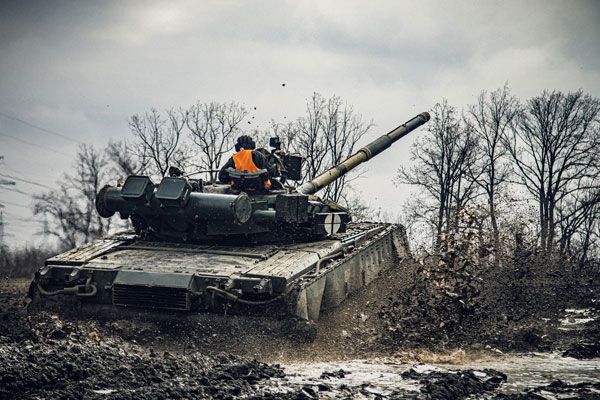Prime
Russia-Ukraine conflict illuminates agric deficits

This handout picture released on February 19, 2022 by the press service of the General Staff of the Ukrainian Armed Forces in an unknown location of Ukraine shows Ukrainian servicemen of 36 separate brigades of marines of Ukraine taking part in exercises on February 18, 2022. PHOTO/AFP
What you need to know:
- In an ideal world, the recent spike in international prices for a range of grains such as wheat (35 percent) and maize (21 percent) thanks to the Russia-Ukraine conflict should have been music to the ears of Ugandan farmers.
Uganda’s grain sub-sector is the last place you would expect to pick out the spillover effect of the largest ground offensive in Europe since the second world war. Yet here we are. Russia’s incursions into Ukraine have thrown sand in the gears of our grain sub-sector.
The vast bulk (nearly 90 percent) of fertilisers used by grain farmers in Uganda are imported from Ukraine. Cynics will be quick to wonder whether the said fertilisers were put to good use when Ukraine was in peacetime. Their cynicism is not entirely baseless seeing as Uganda is a net importer of wheat from Russia. For instance, in 2019, it shelled out a cool $27.5m (Shs98billion) for the whole grain.
In an ideal world, the recent spike in international prices for a range of grains such as wheat (35 percent) and maize (21 percent) thanks to the Russia-Ukraine conflict should have been music to the ears of Ugandan farmers. The fact of the matter, though, is that there is a modicum of local grain farmers. Most—if not all—of them turn up with poor quality yields after being buffeted by high production costs.
The outlook would be much more pleasant if they did not have to pay a premium for agricultural inputs such as NPK from Ukraine. Uganda has the raw materials (nitrogen, phosphorus and potassium) to make NPK at an industrial scale. A legal battle has, however, kept the machines at a fertiliser plant in the Eastern District of Tororo silent. It increasingly looks like private sector innovation and co-creation are the only reasonably practicable solutions left.
To get out of the tight bind, it best serves Uganda to look at its Eastern neighbour. Although not turbocharged, Kenya’s grain sub-sector keeps taking purposeful strides. The National Cereals and Produce Board (NCPB)—a state corporation established in 1985—shares in this success story as it subsidises the cost of fertiliser and buys produce from the grain farmers for good measure. Our Southern neighbour—Tanzania—has also done a commendable job insofar as establishing a working commodity exchange is concerned.
So it invariably follows that a question pivoting around action points for Uganda has to be posed. The answer(s) come in the shape of a lengthy shopping list. For starters, there is a dire need for enactment of laws that establish a national produce marketing board. Coupled with this is also the need for a food reserve authority.
DON'T MISS: Putin and the West: From curiosity to cataclysm
Input subsidies for smallholder farmers also have to be addressed as does infrastructure for the Early Warning and Response System. Other things on the to-do list include harmonisation of the East Africa Community standards on animal feeds and warming up to hermetic technologies.




